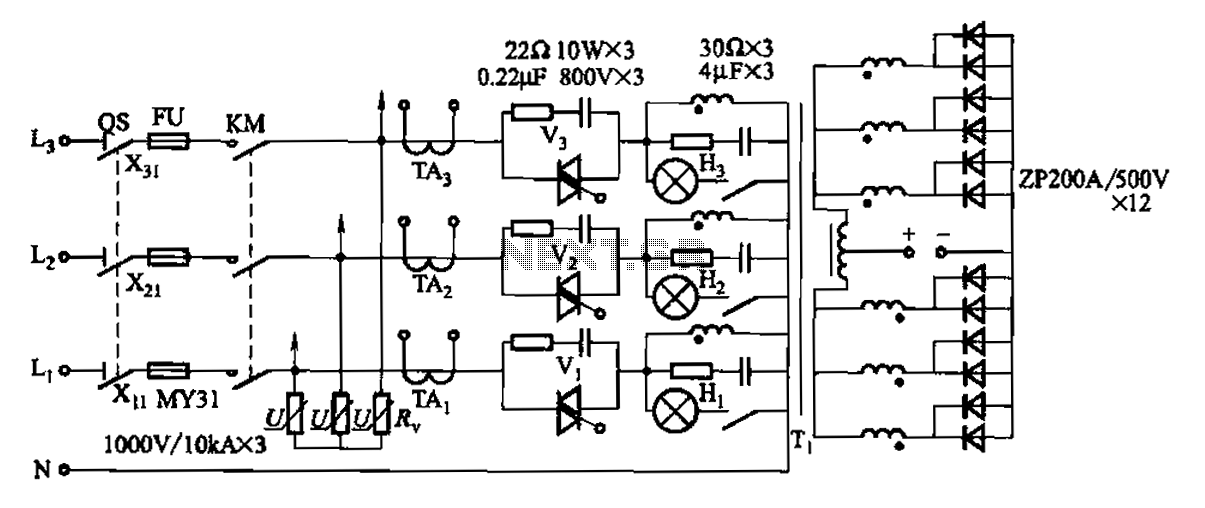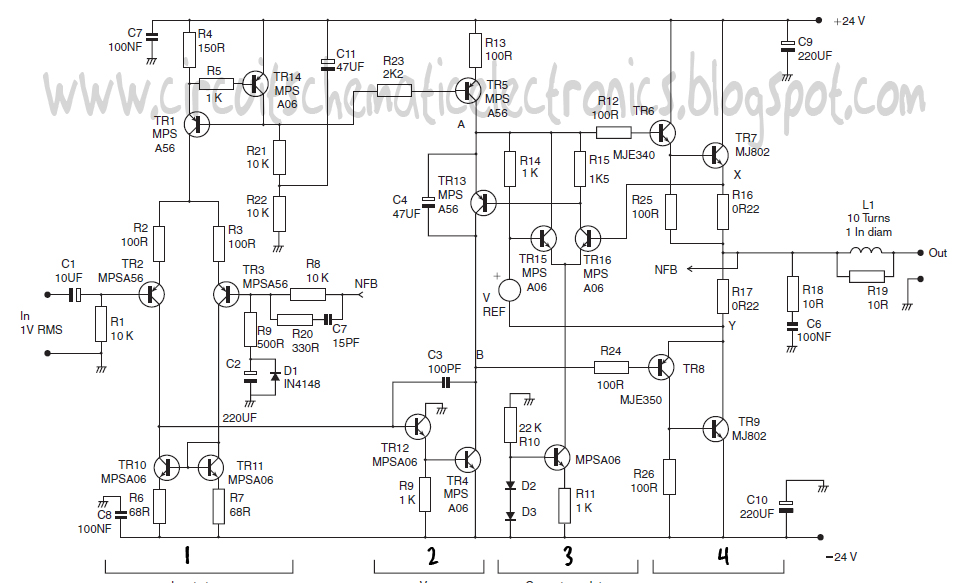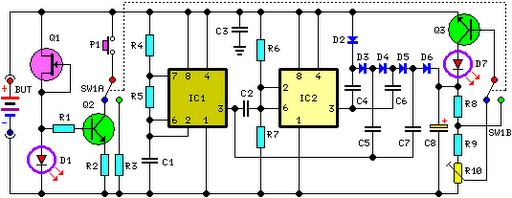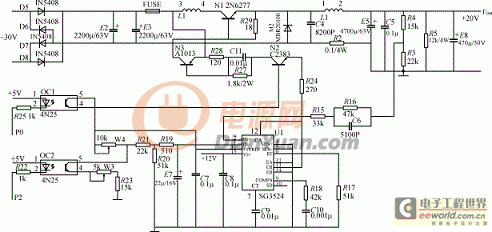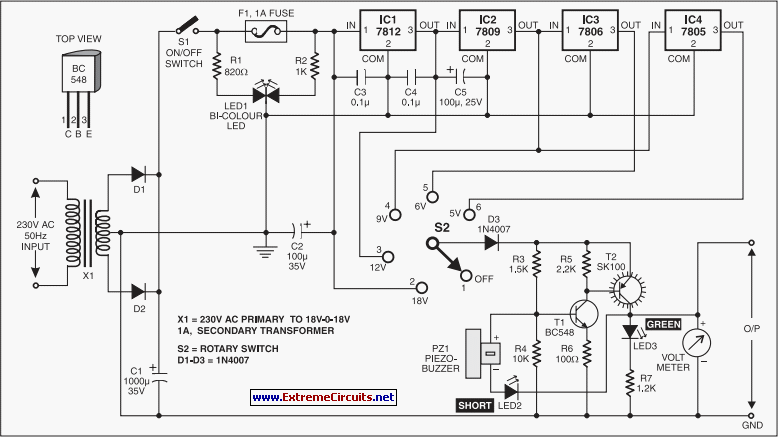
Build an Experimenters Power Supply
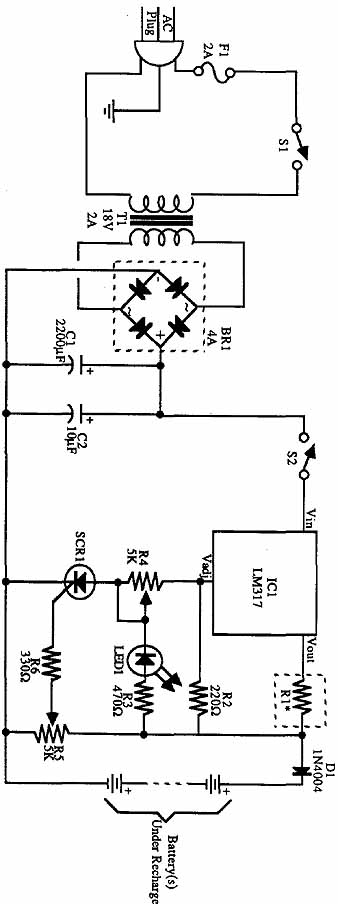
The incoming AC is routed to the primary terminals of a 12.6-volt transformer. The hot side of the AC is connected through a fuse and a single-pole single-throw (SPST) toggle switch. When the switch is in the OFF position, the transformer does not receive power, thus turning off the supply. The 117 VAC is stepped down to approximately 12.6 volts. The specified transformer is rated at 2 amps, which is adequate for the intended application. The power supply is limited to the capacity of the transformer and the voltage regulator. A bridge rectifier (BR1) converts the AC to DC, as depicted schematically within a dotted box. The rectifier can also be constructed using discrete diodes connected as shown. When using the bridge rectifier, it is crucial to connect the leads to the correct terminals. The two terminals marked with a negative sign connect to the transformer, while the positive and negative terminals are the output and must be connected as indicated in the schematic. A 5-volt, 1-amp voltage regulator (7805) is utilized to ensure a steady output of 5 volts. The transformer supplies a significantly higher voltage than necessary for two reasons: lower-voltage transformers (6.3 or 9 volts) typically do not exceed 0.5 amps, and it is easier to find 12 or 15-volt transformers that provide sufficient power. Additionally, the regulator requires a few extra volts as overhead to function correctly. The 12.6-volt transformer specified here meets and exceeds the minimum voltage requirement. Capacitors C1 and C2 filter the ripple inherent in the rectified DC at the outputs of the bridge rectifier. With the capacitors installed correctly (paying attention to polarity), the ripple at the power supply output is minimal. An LED (LED1) and resistor (R1) form a simple power indicator, illuminating when the power supply is active. The 270-ohm resistor is necessary to prevent the LED from burning out. The output terminals are insulated binding posts, and the output wires should not be left bare to avoid accidental shorting. The output wires should be soldered to the binding posts, which can accommodate bare wires, alligator clips, or banana plugs. The 5-volt and 12-volt versions of the power supply are fundamentally similar, with some key differences. The transformer in the 12-volt version is rated for 18 volts at 2 amps, providing ample overhead for the 12-volt regulator and is commonly available. A transformer rated between 15 and 25 volts can be utilized. The 7812 regulator functions similarly to the 7805 but outputs a regulated +12 volts instead of +5 volts. The T series regulator (TO-220 case) is suitable for low-current applications, while the K series (TO-3) is intended for higher capacity applications. In the 12-volt version, R1 is increased to 330 ohms. The multi-voltage power supply operates like four power supplies in one, using a single transformer to tap the voltage at appropriate locations to supply +5, +12, -5, and -12 regulators. This circuit is divided into two halves: one half provides +12 and -12 volts, while the other half provides +5 and -5 volts. Each side connects to a common transformer, fuse, switch, and wall plug. The primary distinction between the multi-voltage supply and the previously described single-voltage supplies is the inclusion of negative power regulators. The circuit ground is the center tap of the transformer. Two separate boards should be constructed, one for the ±5-volt regulators and the other for the ±12-volt regulators. The supply can deliver approximately 1 amp for each output, utilizing nylon binding posts for the five outputs (ground, +5, +12, -5, and -12 volts).
The described circuit is a robust power supply solution suitable for various electronic applications. The use of a 12.6-volt transformer ensures adequate voltage for the voltage regulators while allowing for a sufficient overhead to maintain stable output voltage under varying load conditions. The inclusion of a bridge rectifier allows for efficient conversion of AC to DC, and the use of filtering capacitors minimizes ripple, enhancing the quality of the output voltage. The design also incorporates safety features such as fuses and switches, ensuring that the circuit can be safely powered on and off. The voltage regulators chosen for this design (7805 and 7812) are well-regarded for their reliability and ease of use, making them ideal for hobbyist and professional applications alike. The multi-voltage capability of the design allows it to serve a wide range of devices, making it a versatile addition to any electronics lab or project. The careful consideration of component ratings and configurations ensures that the power supply will operate efficiently and reliably, providing a stable source of power for various electronic circuits.Note the incoming ac routed to the primary terminals on a 12. 6-volt transformer. The hot side of the ac is connected through a fuse and a single-pole single-throw (SPST) toggle switch. With the switch in the OFF (open) position, the transformer receives no power so the supply is off. The 117 VAC is stepped down to about 12. 6 volts. The transformer specified here is rated at 2 amps, sufficient for the task at hand. Remember that the power supply is limited to delivering the capacity of the transformer (and later, the voltage regulator). A bridge rectifier, BR1, converts the ac to dc (shown schematically in the dotted box). You can also construct the rectifier using discrete diodes (connect them as shown within the box). When using the bridge rectifier, be sure to connect the leads to the proper terminals. The two terminals marked with a ” connect to the transformer. The + and ” terminals are the output and must connect as shown in the schematic. A 5-volt, 1-amp regulator, a 7805, is used to maintain the voltage output at a steady 5 volts. Note that the transformer supplies a great deal more voltage than is necessary. This is for two reasons. First, lower-voltage 6. 3- or 9-volt transformers are available, but most don`t deliver more than 0. 5 amp. It is far easier to find 12- or 15-volt transformers that deliver sufficient power. Second, the regulator requires a few extra volts as overhead to operate properly. The 12. 6-volt transformer specified here delivers the minimum voltage requirement, and then some. Capacitors C1 and C2 filter the ripple inherent in the rectified dc at the outputs of the bridge rectifier.
With the capacitors installed as shown (note the polarity), the ripple at the output of the power supply is negligible. LED1 and R1 form a simple indicator. The LED glows when the power supply is on. Remember the 270-ohm resistor; the LED will burn up without it. The output terminals are insulated binding posts. Don`t leave the output wires bare, or they could accidentally touch one another and short the supply.
Solder the output wires to the lug on the binding posts, and attach the posts to the front of the power supply chassis. The posts accept bare wires, alligator clips, or even banana plugs. The 5- and 12-volt versions of the power supply are basically the same, but with a few important changes.
Refer again to ill. 12-2. First, the transformer is rated for 18 volts at 2 amps. The 18-volt output is more than enough for the overhead required by the 12-volt regulator and is commonly available. You may use a transformer rated at between 15 and 25 volts. The regulator, a 7812, is the same as the 7805 except that it puts out a regulated + 12 volts instead of + 5 volts.
Use the T series regulator (TO-220 case) for low-current applications and the K series (TO-3) for higher capacity applications. Lastly, R1 is increased to 330 ohms. The multi-voltage power supply is like four power supplies in one. Rather than using four bulky transformers, however, this circuit uses just one, tapping the voltage at the proper locations to operate the +5, +12, -5, and -12 regulators.
The circuit, as shown in ill. 12-3, is composed of two halves. One half of the sup ply provides +12 and ”12 volts; the other half provides + 5 and ”5 volts. Each side is connected to a common transformer, fuse, switch, and wall plug. See TABLE 12-3 for a parts list. The basic difference between the multi-voltage supply and the single-voltage supplies described earlier in this section is the addition of negative power regulators. Circuit ground is the center tap of the transformer. Make two boards, one for each section. That is, one board will be the ± 5-volt regulators and the other board will contain the ± 12-volt regulators.
The supply provides approximately 1 amp for each of the outputs. Use nylon binding posts for the five outputs (ground, +5, +12, - 🔗 External reference
The described circuit is a robust power supply solution suitable for various electronic applications. The use of a 12.6-volt transformer ensures adequate voltage for the voltage regulators while allowing for a sufficient overhead to maintain stable output voltage under varying load conditions. The inclusion of a bridge rectifier allows for efficient conversion of AC to DC, and the use of filtering capacitors minimizes ripple, enhancing the quality of the output voltage. The design also incorporates safety features such as fuses and switches, ensuring that the circuit can be safely powered on and off. The voltage regulators chosen for this design (7805 and 7812) are well-regarded for their reliability and ease of use, making them ideal for hobbyist and professional applications alike. The multi-voltage capability of the design allows it to serve a wide range of devices, making it a versatile addition to any electronics lab or project. The careful consideration of component ratings and configurations ensures that the power supply will operate efficiently and reliably, providing a stable source of power for various electronic circuits.Note the incoming ac routed to the primary terminals on a 12. 6-volt transformer. The hot side of the ac is connected through a fuse and a single-pole single-throw (SPST) toggle switch. With the switch in the OFF (open) position, the transformer receives no power so the supply is off. The 117 VAC is stepped down to about 12. 6 volts. The transformer specified here is rated at 2 amps, sufficient for the task at hand. Remember that the power supply is limited to delivering the capacity of the transformer (and later, the voltage regulator). A bridge rectifier, BR1, converts the ac to dc (shown schematically in the dotted box). You can also construct the rectifier using discrete diodes (connect them as shown within the box). When using the bridge rectifier, be sure to connect the leads to the proper terminals. The two terminals marked with a ” connect to the transformer. The + and ” terminals are the output and must connect as shown in the schematic. A 5-volt, 1-amp regulator, a 7805, is used to maintain the voltage output at a steady 5 volts. Note that the transformer supplies a great deal more voltage than is necessary. This is for two reasons. First, lower-voltage 6. 3- or 9-volt transformers are available, but most don`t deliver more than 0. 5 amp. It is far easier to find 12- or 15-volt transformers that deliver sufficient power. Second, the regulator requires a few extra volts as overhead to operate properly. The 12. 6-volt transformer specified here delivers the minimum voltage requirement, and then some. Capacitors C1 and C2 filter the ripple inherent in the rectified dc at the outputs of the bridge rectifier.
With the capacitors installed as shown (note the polarity), the ripple at the output of the power supply is negligible. LED1 and R1 form a simple indicator. The LED glows when the power supply is on. Remember the 270-ohm resistor; the LED will burn up without it. The output terminals are insulated binding posts. Don`t leave the output wires bare, or they could accidentally touch one another and short the supply.
Solder the output wires to the lug on the binding posts, and attach the posts to the front of the power supply chassis. The posts accept bare wires, alligator clips, or even banana plugs. The 5- and 12-volt versions of the power supply are basically the same, but with a few important changes.
Refer again to ill. 12-2. First, the transformer is rated for 18 volts at 2 amps. The 18-volt output is more than enough for the overhead required by the 12-volt regulator and is commonly available. You may use a transformer rated at between 15 and 25 volts. The regulator, a 7812, is the same as the 7805 except that it puts out a regulated + 12 volts instead of + 5 volts.
Use the T series regulator (TO-220 case) for low-current applications and the K series (TO-3) for higher capacity applications. Lastly, R1 is increased to 330 ohms. The multi-voltage power supply is like four power supplies in one. Rather than using four bulky transformers, however, this circuit uses just one, tapping the voltage at the proper locations to operate the +5, +12, -5, and -12 regulators.
The circuit, as shown in ill. 12-3, is composed of two halves. One half of the sup ply provides +12 and ”12 volts; the other half provides + 5 and ”5 volts. Each side is connected to a common transformer, fuse, switch, and wall plug. See TABLE 12-3 for a parts list. The basic difference between the multi-voltage supply and the single-voltage supplies described earlier in this section is the addition of negative power regulators. Circuit ground is the center tap of the transformer. Make two boards, one for each section. That is, one board will be the ± 5-volt regulators and the other board will contain the ± 12-volt regulators.
The supply provides approximately 1 amp for each of the outputs. Use nylon binding posts for the five outputs (ground, +5, +12, - 🔗 External reference
